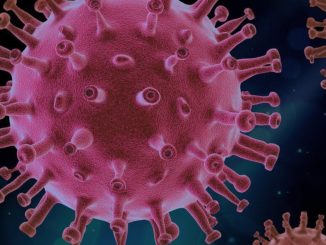First, for those people in the UK, here’s the legal bit:
“It is illegal to manufacture spirits in the UK without a distiller’s licence which is required under the provisions of section 12 of the Alcoholic Liquor Duties Act 1979 and this includes manufacture for “own/domestic use”.
Public Notice 39 – “Spirits production in the UK” dated July 2006 provides further information about HM Revenue & Customs’ requirements.
If you require further assistance, then please contact the National Advice Service on Telephone 0845 010 9000 or www.hmrc.gov.uk Where you can obtain & view Public Notice 39”
Ok, now the legal stuff is out of the way, let me start my story. Once upon a time, there was a poor Geeks who was a process engineer who worked on oil refineries and knew all about distillation, having operated a giant crude distillation column and even a power station gas-fired boiler. He once dreamed of making his own whisky and having seen a few YouTube videos of people making their own makeshift distillation columns and gear using car radiators, pieces of old hose pipes and plenty of inspiration from Heath Robinson, decided to try and do things properly. However, after enquiring how much it would cost to buy a small distillation column and weld all the parts together, he realised it was out of his league and quickly forgot the idea.
Several decades later, Geeks found a brewing website that showcased a New Zealand company that created an entire distillation unit complete with boiler and condenser column that could be safely and discreetly run from your kitchen and could produce 93% alcohol, which in distillation terms is outstanding when the azeotropic limit for ethanol is 95.63%.
And all for £430.
What is vodka? Simply put, it’s water and ethanol (or alcohol in old money terms). Sure, you can add some flavourings to it, you can “triple distil” it and is normally sold in Europe at a minimum of 37.5% ABV (alcohol by volume) or 40% in the rest of the world.
Vodka is made by distilling the alcohol made from a fermented grain solution, or rye, wheat, potatoes, soybeans, rice, or sugar or sometimes even the by-products of refining crude oil!
In our case, we are going for the quickest and cheapest option: we are going to ferment 6kg of sugar made up to 25 litres with warm water and we’re going to use a super-strain of yeast that can produce and survive an alcohol solution of around 15% for maximum efficiency.
We are going to use Pure Turbo yeast and add that to our bucket full of warm sugar solution and stir. After that we are going to add some Turbo carbon. This is used to remove any undesirable fermentation by-products that could affect the taste of the alcohol. This is like our first carbon filter. As always, sterilise everything before preparation.
Again, like all fermentation, make sure you keep the fermenting bucket in a room between 18-25°C otherwise the fermentation will stop. After a week, we should have a black solution containing about 15% alcohol. The next stage is to clear the solution and we do this by adding the clearing agents to the solution.
After a day, we should have a clear solution of 15% alcohol, so we syphon this to a sterilised second bucket, avoiding all the black gunk at the bottom of the first bucket. Now we need to extract all the alcohol from this solution and the way we do this is by distillation. Let me introduce the Still Spirits Turbo 500 (T500) with Copper Condenser Column:

© Going Postal 2019
An amazing piece of kit that’s able to turn a 15% alcohol solution into 93% commercial quality alcohol.
We throw the 15% solution into the bottom part of the steel boiler and add some ceramic saddles in there to stop violent bubbling. We connect the condenser to the kitchen tap via the plastic inlet pipe and a tap fitting. On this inlet pipe there’s a microvalve to adjust the water flow. I will go into this in more detail later. The condenser outlet pipe we will place into the sink so the water can drain away. It will be quite warm, around 50-60°C. The other pipe outlet is for our collected pure alcohol which will slowly drip into a glass demijohn, which we will place slightly below the still.
We add some distilling conditioner into the boiler containing the 15% alcohol solution to avoid foaming in the boiler. What we are trying to avoid is the liquid from the boiler entering the copper condenser – we just want vapour entering the copper column.
Inside our copper condenser are hundreds of copper and stainless-steel saddles.
This is the secret to producing very pure alcohol. In very simple terms, what happens during distillation is that when the 15% solution is heated up in the boiler, a vapour of water and alcohol rises up the column. When the vapour touches the saddles, some of the liquid condenses on the saddles and drips back down the column back into the wash. This liquid now contains slightly more water than alcohol while the vapour that is still moving up the column now contains slightly more alcohol than water vapour. This process is repeated further up the packed column until we get pretty much pure alcohol vapour at the top of the column and pretty much pure water dripping at the bottom of the column, dripping back down into the boiler.
The alcohol vapour at the top of the column is condensed by the cooler that uses cool water from the kitchen tap. When we control the water flow to such an extent using the microvalve to achieve a condenser temperature steady at 50°C, we can achieve an efficient reflux and a controlled flow of pure alcohol from the still.
It is the saddles that make the column so efficient in separating out the alcohol from the water. If we didn’t have the saddles in there, we would probably get an alcohol product of around 40-60%.
The whole process takes around 4 hours to process 25 litres of wash. From switch on, it takes about an hour before the vapour starts to form as the 25 litres mixture of 15% alcohol is heated and the kitchen tap can be opened to start the condensing water flow. We’re looking for around 400 ml/min water flow controlled by the microvalve. You open or close the microvalve slightly to keep a condenser temperature of 50°C. It takes a few minutes to set but once the unit settles down it pretty much stays there.
A word of warning: it is essential keep the household water pressure constant, so no running baths, no washing machines running otherwise you will be forever changing the microvalve settings and chasing your tail.
I normally remove the first 150 ml of liquid that comes out of the condenser. You don’t really need to do this in this unit, but I do out of habit. In traditional distillation using an alembic condenser, the first 150 ml or so are undesirable chemicals (the heads), such as acetone, acetaldehyde, esters and methanol while not particularly pleasant to consume in large quantities, will also add off-flavours to your pure alcohol.
You should get about 3.5 litres of 93% alcohol. At this stage, we need to water this alcohol down as drinking this firewater is too strong, even for the brave and foolish. Also, it is extremely flammable so keep well away from naked flames or any hot places. It will keep forever in a glass demijohn with a rubber bung but do not keep pure alcohol in any plastic container as it will leach plastic flavours into the alcohol.
I normally water my alcohol down using filtered water to 40% ABV to make my vodka. Now although it’s quite ready to drink at this stage you may want to polish out some of the slight off-flavours if they are present. I personally haven’t noticed the difference in this piece of equipment it is that good, but I still do out of habit. I use some carbon filtering called EZ Filter where by you place your watered-down alcohol (must be below 50% ABV in order to work) in one bucket and it percolates through an active carbon filter into the second bucket. Do this twice and you now have triple filtered vodka which is better quality and purity than most commercial vodkas.
So, Geeks, what can I do with 93% alcohol?
Well, you can fuel your dragster with it, or as I do, make Limoncello and Limecello with it. If you ever buy the shop bought stuff, it’s 25% ABV and sickly-sweet rubbish. The proper way to make it is to use your 93% alcohol and some lemon or lime peel and let this steep in a glass demijohn for a month then dilute with a syrup solution. You will make the best tasting and most authentic Limoncello ever. I dilute mine down to 55% to make it even more fiery and stick it in my freezer alongside my home-made vodka.
Some additional points:
If you want to get a Distiller’s licence in the UK, it will cost you £5,000/year, you need a specially made warehouse to store the alcohol and you must have a minimum size still volume of 1,800 litres, so it’s impossible to home distil in the UK. You may have better success if you don’t need a still to apply for a Rectifier’s licence or a Compounder’s licence, but it’s highly unlikely.
The talk of home distilling making you blind and is dangerous is simply bunkum. During the Prohibition in America, people went blind and died because the bootleggers were cutting their product with cheaper methanol and using denatured commercial alcohols. Using the above equipment, even incorrectly, will still give you a product that has very little nasties in there. Using it correctly produces alcohol that is better than commercial in some cases.
Like the myth of needing a TV licence because you have a TV, distillation of alcohol washes results in a high-quality product, more so with something like the T500.
Remember: you are not MAKING alcohol, you are merely CONCENTRATING it. If you’ve ever left a bottle of wine in the freezer for too long and taken it out, you’ll notice that amongst the frozen wine, there’s some liquid floating around. Congratulations! You have concentrated some alcohol using freeze distillation without a Distiller’s licence.
Next topic: The Geek’s Guide To Distilling Commercial Gin For £2.50 A Litre Bottle.
Next topic after that: The Geek’s Guide To Distilling Commercial Whisky For £2.50 A Litre Bottle.
© Beware of Geeks bearing GIFs 2018
Audio file



